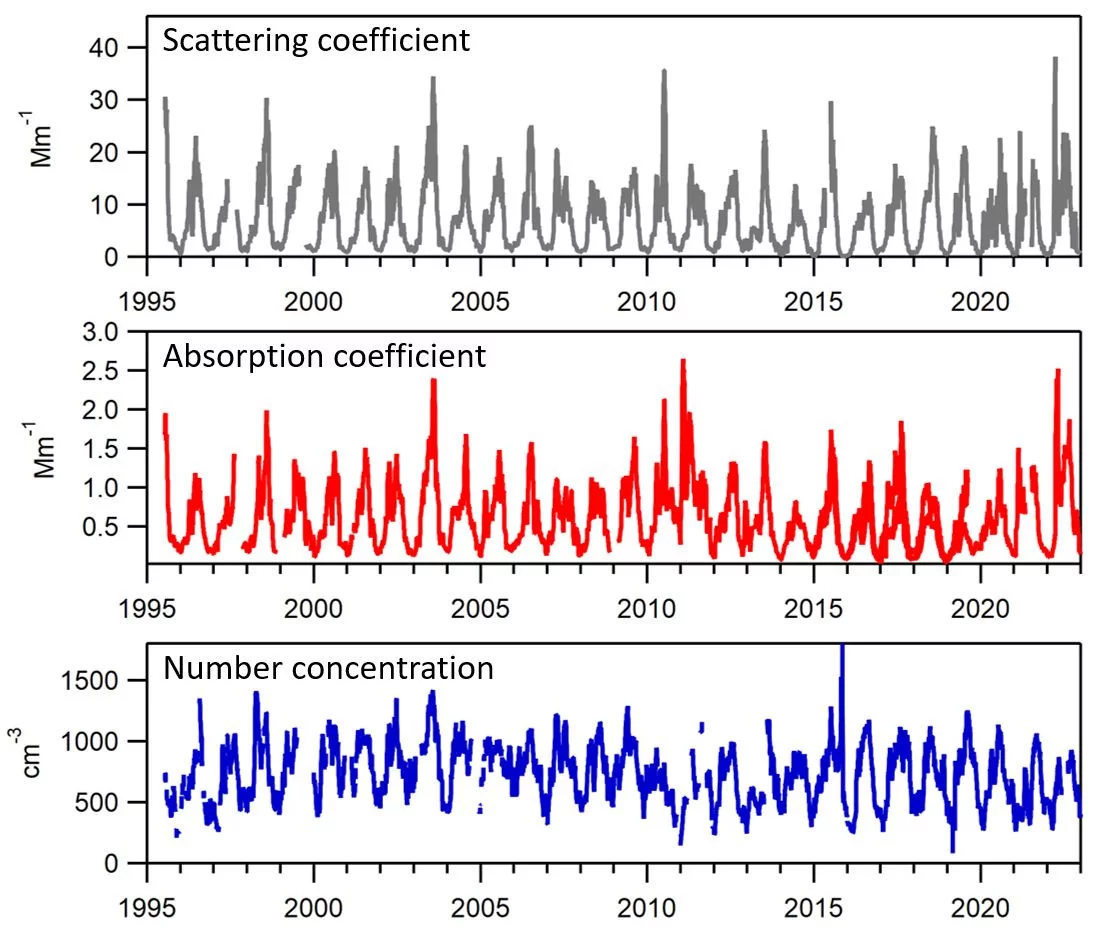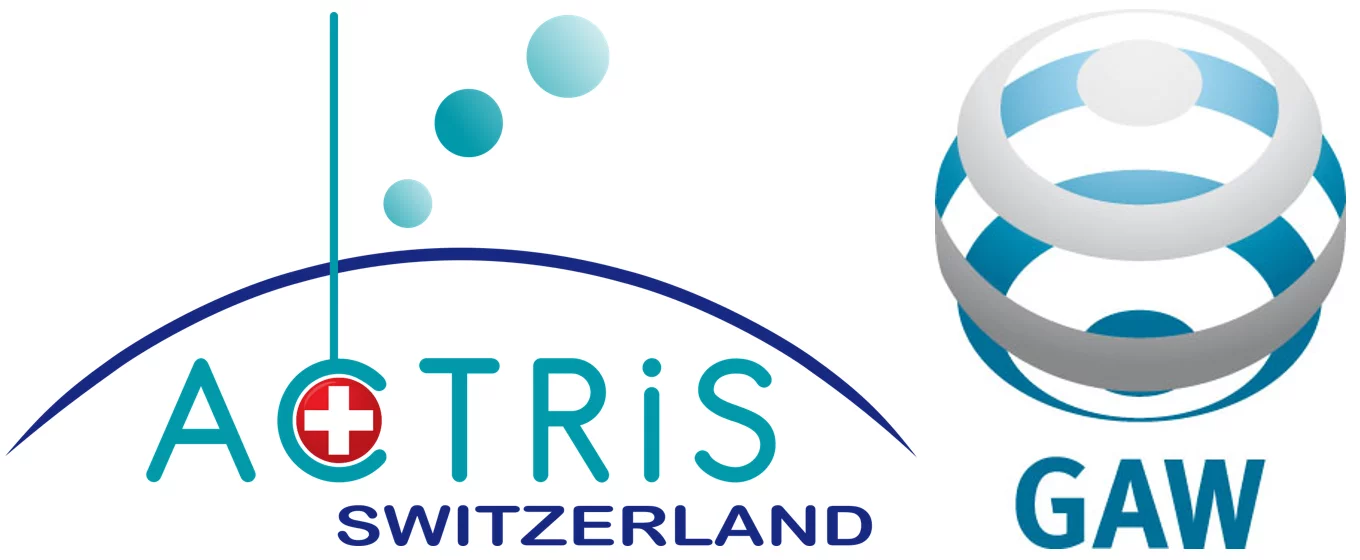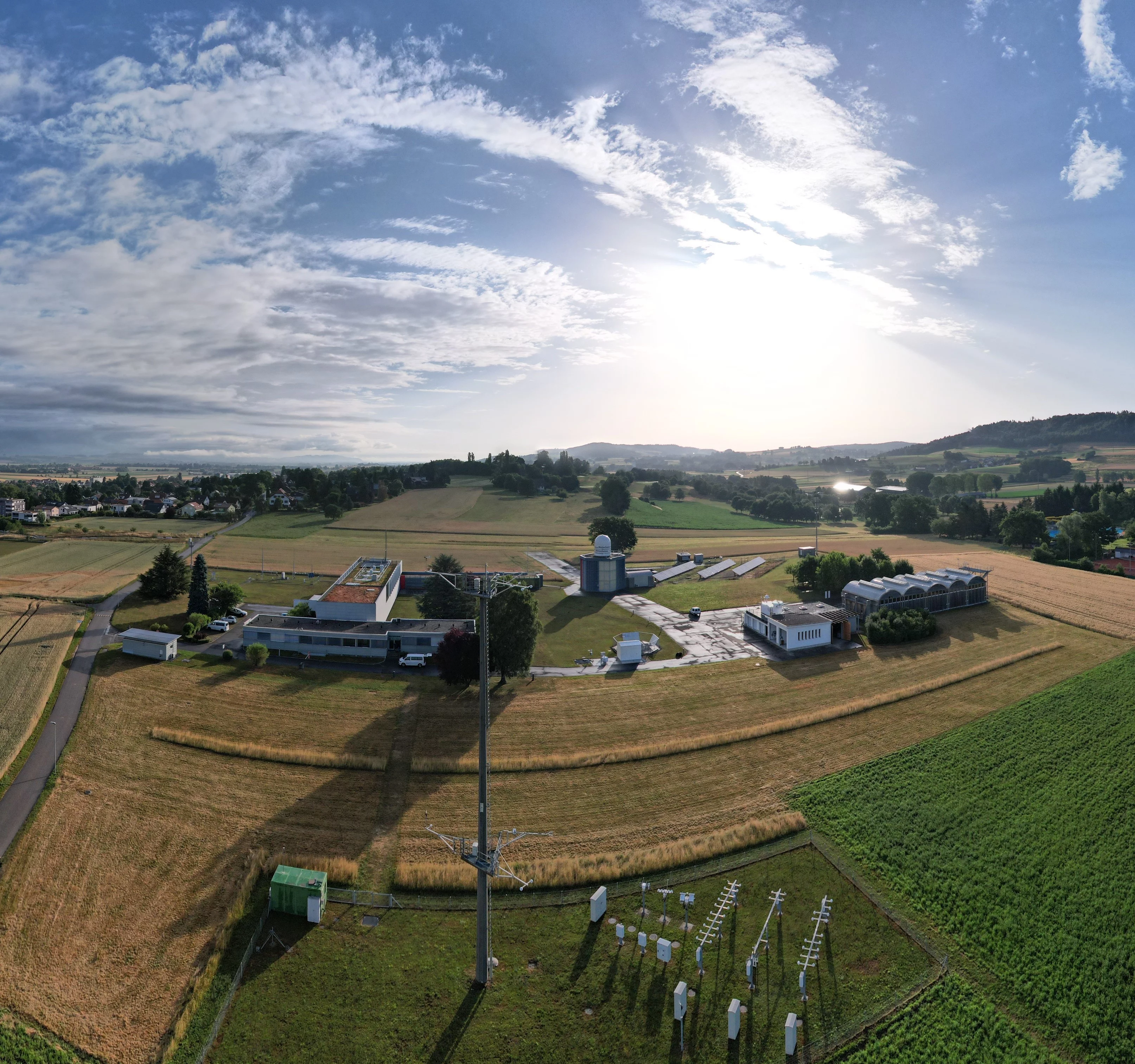Research facilities for long-term observations and process studies
First continuous observations of atmospheric aerosol at the Jungfraujoch research station by PSI started back in 1988. In the meantime, one of the longest continuous data sets of climate-relevant aerosol properties has been created. These data can be used, for example, to determine how measures to reduce anthropogenic emissions affect the concentration of aerosols in the atmosphere. Since 2019, continuous aerosol measurements have also been carried out at the Payerne Observatory. The observation platforms are constantly being expanded and serve as facilities for studies on the effects of aerosols on air quality, climate and weather in collaboration with national and international research partners. Please get in contact with us, if you were interested in performing a research experiment at one of these sites.
ACTRIS and GAW Observation Networks and Transnational Access Opportunities
The aerosol observations performed by the Laboratory of Atmospheric Chemistry are integrated in the Aerosol, Clouds and Trace Gases Research Infrastructure (ACTRIS) and the Global Atmosphere Watch (GAW) Program of the World Meteorological Organization. Please visit the web page of the ACTRIS Switzerland Consortium for more information on our research facilites, real-time data, and access opportunities.
Jungfraujoch Research Station
The High Altitude Research Station Jungfraujoch is located in the Swiss Alps in the center of Europe and it is operated by the Foundation HFSJG. PSI runs the in situ aerosol observations in the Sphinx laboratory at an altitude of 3'580 m above sea level. This is a unique site to study the aerosol present in the lower free troposphere and transport of pollution from the planetary boundary layer to higher atmospheric layers. Clouds regularly envelop the research station, which makes it ideal for studying aerosol-cloud interactions directly inside clouds. See also ACTRIS Switzerland.
Payerne Observatory
The aerological site at Payerne is the main observatory of MeteoSwiss equipped with a comprehensive set of instrumentation for meteorological measurements at ground and the column above. It is located at a rural site in the Swiss Midland at an altitude of 490 m above sea level, thus representing the regional background in terms of short-lived climate pollutants such as aerosols. It hosts additional observations including a station of the Swiss air quality monitoring network (Nabel) covering aerosol parameters falling under the clean air act. In 2019, PSI started additional in situ aerosol observations to initiate integration of this site as a national facility of the ACTRIS observation network. Comprehensive characterization of aerosol properties and their vertical distribution is obtained through collocated remote sensing observations of aerosols and clouds from collaborating partners of ACTRIS Switzerland, thus providing an ideal setting to study sources, transport and environmental impacts of aerosols. See also ACTRIS Switzerland.
Projects
| Project Sort descending | Description | Duration Sort ascending | Contact |
|---|---|---|---|
| ACTRIS | Observation network of the Aerosol, Clouds and Trace Gases Research Infrastructure (ACTRIS). Source: www.actris.eu |
ongoing since 2011 | Dr. Martin Gysel Beer |
| GAW Aerosol Monitoring at JFJ | GAW Longterm Aerosol Monitoring at the High-Altitude Research Station Jungfraujoch |
ongoing since 1995 | Dr. Martin Gysel Beer |





